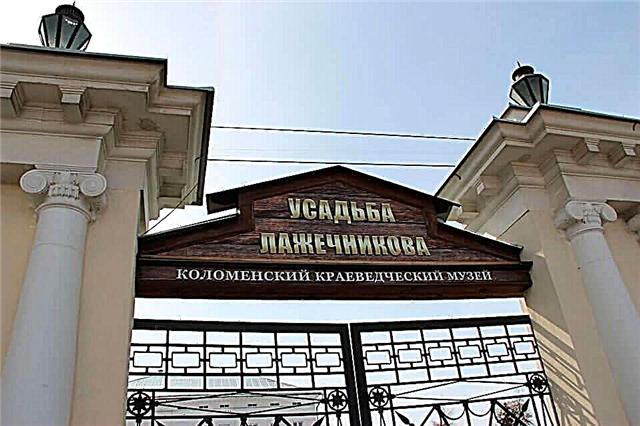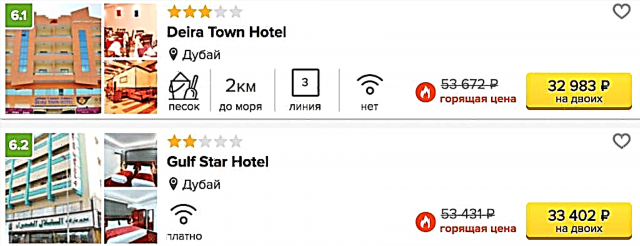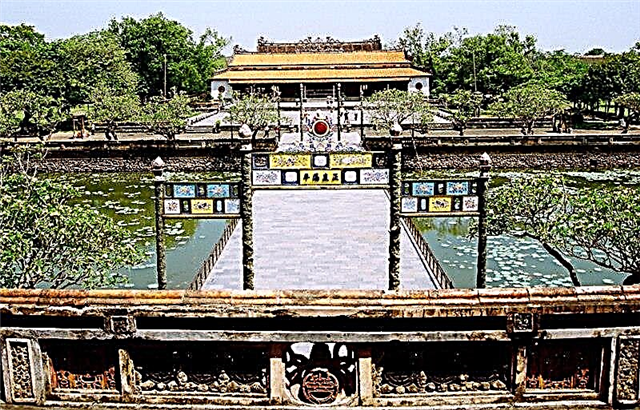Address: Russia, Moscow, Leninsky prospect (metro station Leninsky prospect, Oktyabrskaya)
Main attractions: Alexandrinsky Palace, Manege, Summer House, Hunting Lodge
Coordinates: 55 ° 43'14.0 "N 37 ° 35'37.0" E
Cultural heritage site of the Russian Federation
Content:
On the right bank of the Moskva River, in the very heart of the capital, there is one of the largest Moscow parks, which used to be called Neskuchny Sad. Smooth linden alleys, beautiful fountains, attractions for kids, a huge Green Theater and sports grounds. Everything is as it should be in a place where people come to rest from the city noise. In different parts of the park you can see the picturesque buildings of the old estate Neskuchnoye.

Alexandrinsky palace
The history of the estate
In fact, on the territory of the modern Neskuchny Garden, park alleys and buildings that belonged to three noble estates have been preserved. The owner of one of them was Prokofiy Akinfievich Demidov, who, like his famous father, owned large mining enterprises. P.A. Demidov was known as a passionate gardener, a lover of birds and bees. On the territory of the estate, he built a rich palace for himself and placed in it many cages with songbirds.
The Demidov Botanical Garden appeared in the estate in 1756 and had the shape of an amphitheater. In addition to unusual ornamental shrubs and fruit trees, palm trees, exotic for Russians, could be seen here. And the first plants - shoots and seeds - came to the Moscow estate from the botanical garden in Solikamsk. In 1781, Academician Peter Simon Pallas lived for a whole month at Demidov's estate and, at his request, compiled a detailed catalog of trees, shrubs and grasses growing in the vicinity of the miner's house.
The eccentricity of the owner manifested itself in different ways. He ordered to dress the guardians of the botanical garden in white suits and forced them to make up like park sculptures. The watchmen stood motionless and "came to life" only when one of the visitors tried to break a tree branch or pluck beautiful flowers from a flower bed. Because of this, Muscovites began to call the garden "Neskuchny". But this is only one of the versions of the origin of the unusual name.

Maid of honor
After Demidov's death, the land was bought by Elena Nikitichna Vyazemskaya, followed by Count Fyodor Grigorievich Orlov. Under the new owner, in 1806-1808, a large riding hall was built on the territory of the estate.
From the south, the estate of Prince Nikita Yuryevich Trubetskoy, who acquired these lands in 1728, adjoined the Demidov possessions. In the middle of the 18th century, a beautiful two-story house appeared here. It was built for the princely family by the architect Dmitry Vasilyevich Ukhtomsky, a famous master of the Elizabethan baroque. The prince's descendants redesigned the estate in their own way. They arranged in it a "Versailles garden", a menagerie and a poultry house, wooden galleries and a stone grotto.
After the Trubetskoy family, Neskuchnoye changed several owners. Some owners tried to establish the production of iron and copper products on the estate. Others, in pursuit of profit, opened the first hospital in the city with artificial mineral waters on the banks of Moscow. However, all attempts to obtain income from the estate failed. Neskuchnoe continued to be a place of mass festivities and amusements, and the audience who came here entertained themselves as best they could. At the beginning of the 19th century, balloon flights, which were rare in those days, were very popular.

Summer (Tea) House
At the very beginning of the reign of Emperor Nicholas I, vast lands on the right bank of Moscow were bought out by the palace department in order to create a new summer royal residence here. The southern section of the lands acquired by the treasury was occupied by the former estate of N.Yu. Trubetskoy Neskuchnoye. It is believed that it gave the name to the entire palace and park ensemble built later. The Golitsyn estate was located nearby. The north of the new royal residence previously belonged to the Orlov Counts and consisted of several sections. And in the center of the vast palace property was the ancient estate of Demidov with a botanical garden well-known to Muscovites.
From that moment on, the territory of Neskuchny Garden began to be equipped as a single architectural and park complex. Regular parks of individual noble estates were gradually planted with new trees and shrubs and turned into landscape ones. The famous architect Evgraf Dmitrievich Tyurin magnificently decorated the two-story building of the Oryol Manege and gave it a solemn look.
The Demidov Palace, or as it began to be called, the Alexandria Palace, was also redesigned in the traditions of the late Empire style and equipped with chambers for the emperor and spacious halls for receiving guests. Then, according to the project of E.D. Tyurin, two large buildings were added to the main palace - Freilinsky and Cavalry, as well as a small guardhouse building. A front driveway led from Kaluzhskaya Street to the main entrance to the palace. It originated from the beautiful gate, which was decorated with the allegorical sculpture "Abundance".

Hunting lodge. Here is the shooting of the program "What? Where? When?"
In 1917, the royal estate was nationalized. Then Neskuchny Garden was renamed the Maxim Gorky Park of Culture and Leisure. Year after year, many new buildings and pavilions were erected here, as well as the landscape was changed - alleys were broken, the river bank was fortified and new plantings were made. Therefore, the modern park is very different from what it was 100 years ago.
What buildings have survived in Neskuchny Garden
In the "Demidov" part of the park, there is the Alexandria Palace, built in the middle of the 18th century in the classicism style and reconstructed in the 1830s as an imperial residence. On the sides of the luxurious house there are small colonnades that support neat semicircular balconies. Chamber statues of dogs can be seen to the left and right of the central entrance. In 1930, a beautiful cast-iron fountain appeared on the square in front of the palace, which until that time had adorned Lubyanka Square. And this fountain was built at the end of the 19th century according to the project of the talented sculptor Ivan Petrovich Vitali.

Former arena. Mineralogical Museum named after A.E. Fersman in Neskuchny Garden
Nowadays, the palace is occupied by the Presidium of the Russian Academy of Sciences, and, unfortunately, it is impossible to inspect the building inside. On the terrace, where the famous botanical garden once grew, today there is a large Green Theater, which can accommodate up to 15 thousand spectators.
From one of the owners of the estate, Count Fyodor Orlov, a two-storey arena building, built at the beginning of the 19th century, remained in the park. Since 1936, it has housed one of the most famous mineralogical museums in the country, named after Academician A.E. Fersman. Unique museum collections began their history in 1716 and still attract many visitors.
The Summer (or Tea) House was also left from the Oryol estate. It was built in 1796 and today is the oldest of the manor buildings. A picturesque two-storey building in the classicism style is decorated with a slender colonnade, and one-storey annexes are made on either side of it. Nearby there is a small playground and benches where visitors to the park like to relax.

Small (Grotesque) bridge
From the estate of Prince N.Yu. Trubetskoy, in Neskuchny Garden, a small neat hunting lodge-rotunda, built in the middle of the 18th century, has been preserved. In it, the hospitable owner loved to spend time with his friends. In modern history, this ancient building has become famous as the filming location for the TV show “What? Where? When?". In memory of the princely estate Neskuchnoye, there was also a large ravine with a dam and several alleys of the old regular park.
A fun garden for relaxation
The park area has long been chosen by Muscovites for walks and leisure.Guests of the Neskuchny Garden can walk along the paths past several ponds, admire the picturesque bridges thrown over the ravines and feed the almost tame squirrels. Many people like to just sit on benches in the shade of trees and look at the pleasure boats cruising along the river.
Some parts of Neskuchny Garden look like a dense forest. Oaks, maples, poplars, lindens and birches grow on the territory of the former noble estates, and in summer many flower beds are laid out here. Playgrounds and attractions have been built in the park for children. For horse lovers there is the Equestrian Development Center.

Pavilion-rotunda in honor of the 800th anniversary of Moscow
How to get there
It is not difficult to reach Neskuchny Sad on foot from the Leninsky Prospekt or Oktyabrskaya metro stations. You need to leave in the direction of Ordzhonikidze Street. Trolley buses also run to the park area.
From the other bank of the Moskva River, you can get to the garden through the pedestrian Andreevsky Bridge. In addition, pleasure boats stop at Neskuchny Garden, which carry tourists down and up the river.











